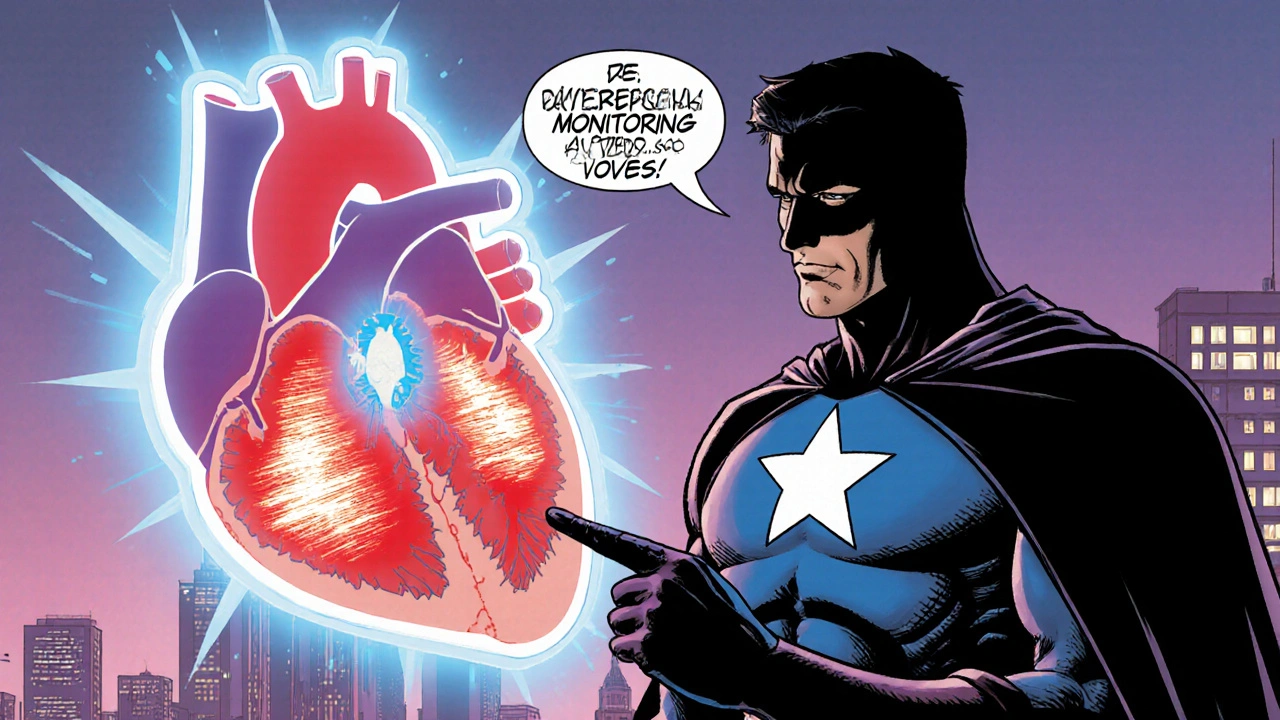Hypertrophic Subaortic Stenosis – Overview & Key Insights
When dealing with Hypertrophic Subaortic Stenosis, a thickening of the heart muscle that blocks blood flow out of the left ventricle. Also known as HCM with outflow obstruction, it often presents with shortness of breath, chest pain, or fainting. A major driver of the problem is left ventricular outflow tract obstruction, the narrowed passage that forces the heart to work harder, which can be triggered by abnormal septal tissue. To keep the heart from over‑reacting, clinicians frequently prescribe beta‑blockers, medications that slow the heart rate and reduce contractility. In severe cases, surgeons may perform surgical myectomy, removal of part of the thickened septum to relieve obstruction. Understanding these core concepts helps you navigate the detailed articles that follow.
Related conditions and treatment options
The obstruction created by Hypertrophic Subaortic Stenosis isn’t just a mechanical issue; it reshapes the heart's electrical system, often leading to arrhythmias. Genetic mutations, especially in the MYH7 and MYBPC3 genes, raise the risk of developing the thickened muscle. People with a family history should consider genetic counseling and early screening because early detection can prevent complications like sudden cardiac death. Lifestyle tweaks—avoiding intense dehydration, staying hydrated during exercise, and limiting stimulants—reduce the trigger for symptoms.
Diagnosing the condition relies heavily on imaging. A transthoracic echocardiogram visualizes the septal thickness and measures the pressure gradient across the outflow tract. When echo images are unclear, cardiac MRI provides a detailed view of muscle architecture and scar tissue. Both tools help doctors decide whether a patient needs medication, an invasive procedure, or simply regular monitoring. Blood tests for biomarkers such as NT‑proBNP also give clues about heart strain.
Treatment starts with medication for most patients. Beta‑blockers remain first‑line because they blunt the heart’s contractile force, lowering the outflow gradient. Calcium‑channel blockers like verapamil work similarly for those who can’t tolerate beta‑blockers. In patients where medication fails to control symptoms, interventional options come into play. Hypertrophic Subaortic Stenosis can be addressed surgically with myectomy, which removes the excess septal tissue and restores normal flow. For patients who are poor surgical candidates, alcohol septal ablation—injecting alcohol into a small artery to shrink the septum—offers a less invasive alternative. Decision‑making balances symptom severity, age, and overall health.
Long‑term management hinges on risk stratification. Implantable cardioverter‑defibrillators (ICDs) are considered for those with a high risk of life‑threatening arrhythmias. Regular follow‑up appointments, typically every six to twelve months, keep the pressure gradient in check and allow timely adjustments to therapy. Patients also benefit from cardiac rehabilitation programs that teach safe exercise techniques and stress‑reduction strategies. The collection of articles below dives deeper into specific drug interactions, procedural nuances, and lifestyle strategies, giving you a toolbox to manage Hypertrophic Subaortic Stenosis effectively.
